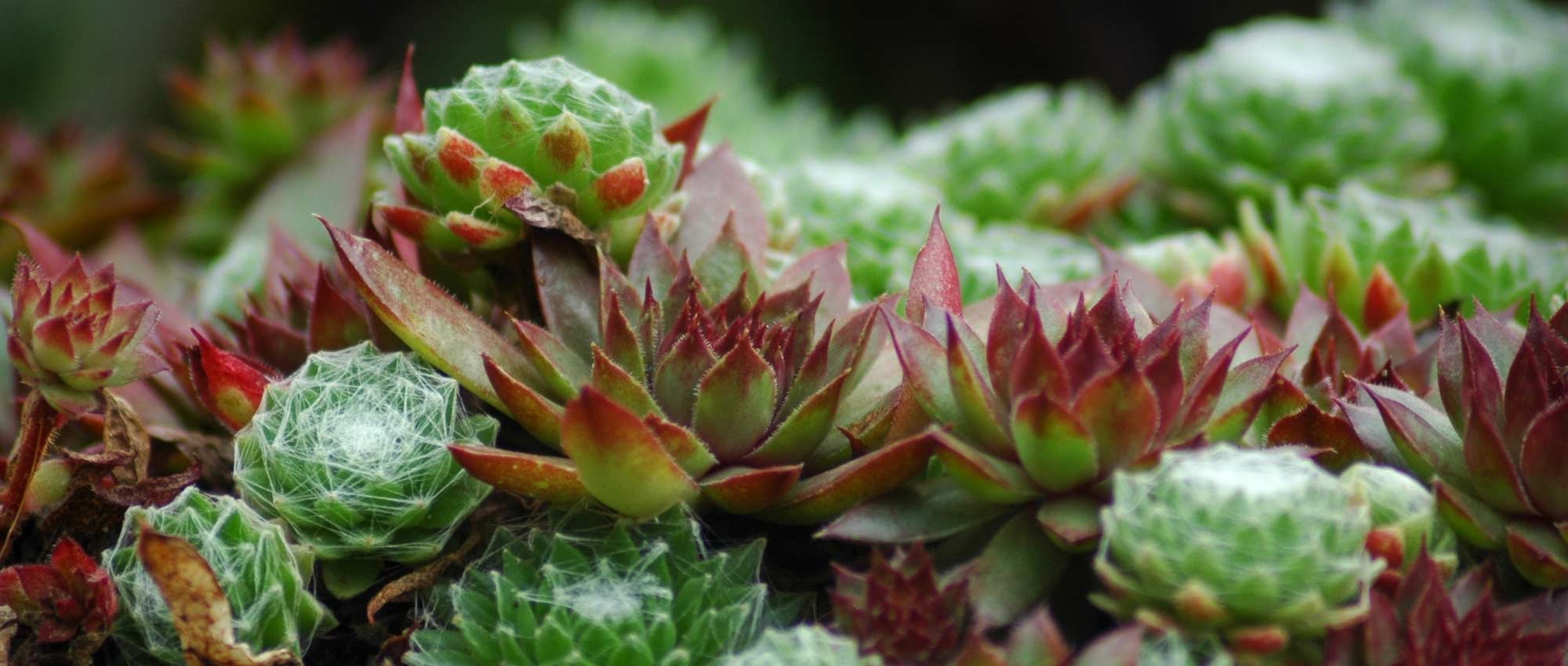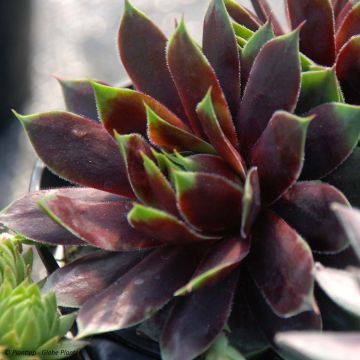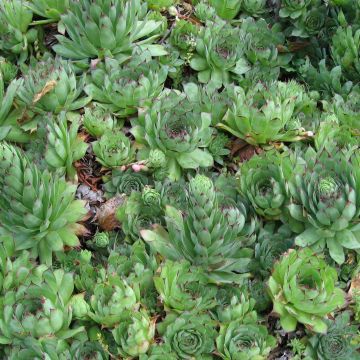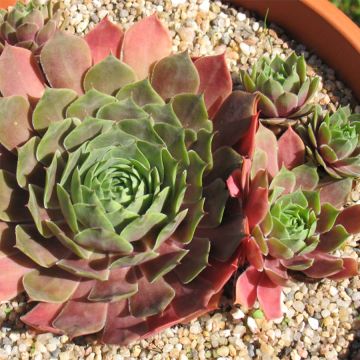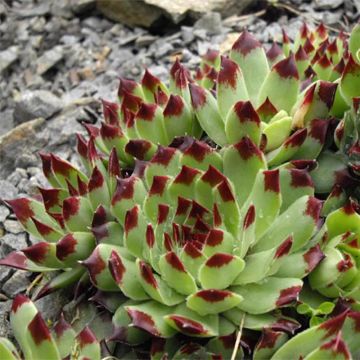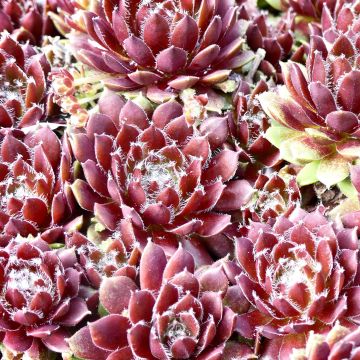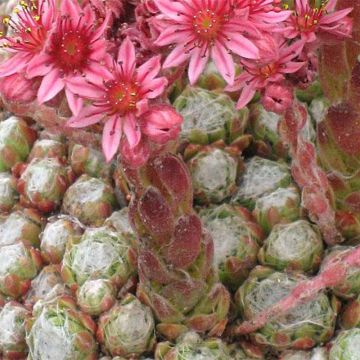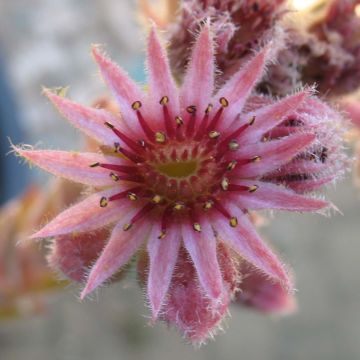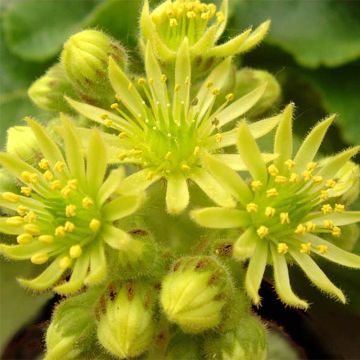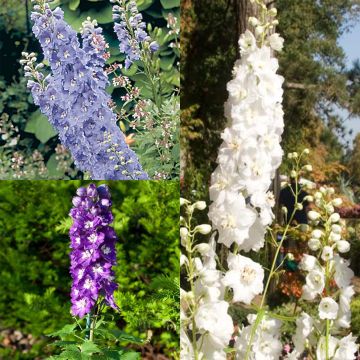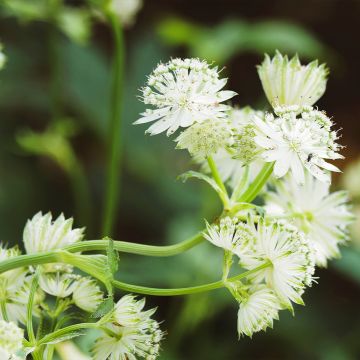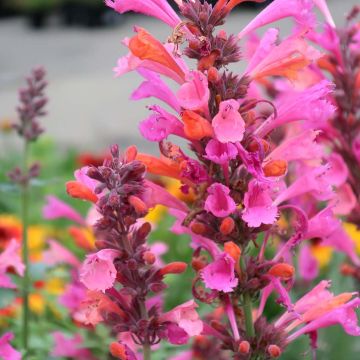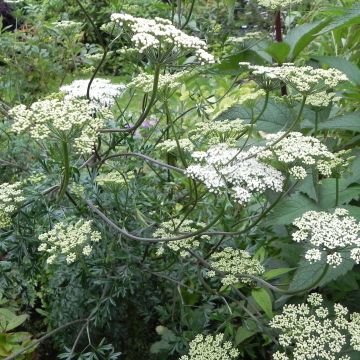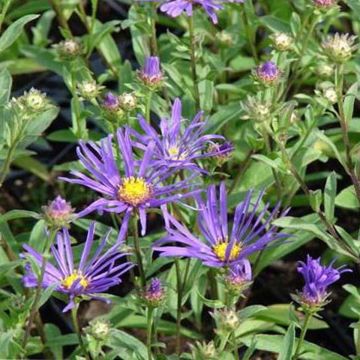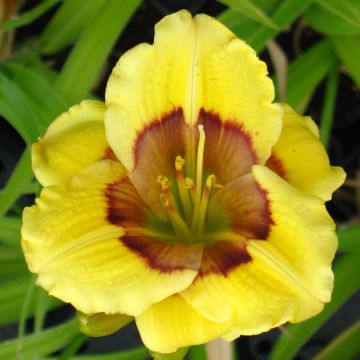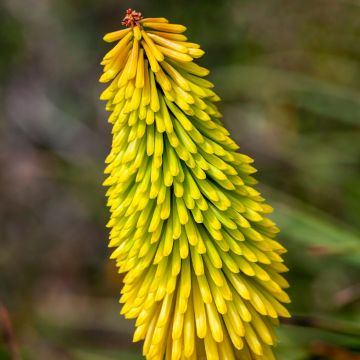

Sempervivum Noir - Joubarbe noire.
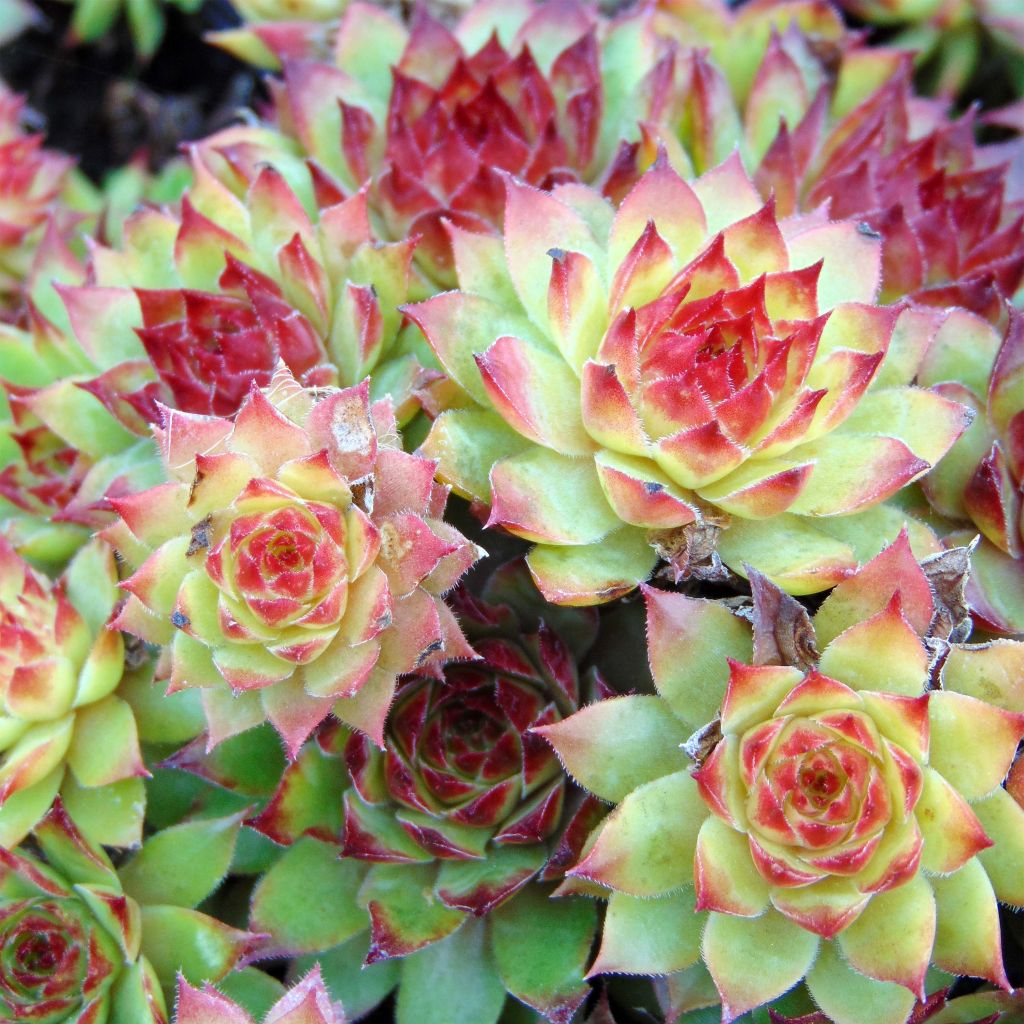

Sempervivum Noir - Joubarbe noire.
Sempervivum tectorum Black
Sempervivum x tectorum Noir
Houseleek, Hen and Chicks
Hello, as usual, the items were very well packaged, just like everything else in my order. Planted immediately upon arrival - I'm more than delighted with my purchases from you and have even recommended you to all my family and friends. Thank you, Promesses de Fleurs!
Evelyne, 17/10/2025
Special offer!
Receive a €20 voucher for any order over €90 (excluding delivery costs, credit notes, and plastic-free options)!
1- Add your favorite plants to your cart.
2- Once you have reached €90, confirm your order (you can even choose the delivery date!).
3- As soon as your order is shipped, you will receive an email containing your voucher code, valid for 3 months (90 days).
Your voucher is unique and can only be used once, for any order with a minimum value of €20, excluding delivery costs.
Can be combined with other current offers, non-divisible and non-refundable.
Home or relay delivery (depending on size and destination)
Schedule delivery date,
and select date in basket
This plant carries a 12 months recovery warranty
More information
We guarantee the quality of our plants for a full growing cycle, and will replace at our expense any plant that fails to recover under normal climatic and planting conditions.
Would this plant suit my garden?
Set up your Plantfit profile →
Description
Sempervivum 'Black' is a beautiful selection of roof houseleek with remarkably purple-black foliage. It grows as easily as its ancestor. It blends perfectly with stones, covering them with a geometric carpet of small succulent rosettes, reminiscent of miniature artichokes. Its pinkish-purple star-shaped flowers emerge from the heart of the mature rosettes on a summer's day, like an unexpected burst of colour. This very hardy perennial lives almost without soil and is satisfied with rainwater. It suits small terracotta basins, neglected areas, and cracks in an old wall.
Sempervivum is native to the mountain ranges of Europe and Morocco. This succulent plant belongs to the Crassulaceae family. It grows spontaneously in rocky grasslands, on rocks and scree, in open and sunny situations. It is not uncommon to see it on the old walls and roofs of mountain villages. The roots of this perennial are thick and long. They infiltrate deep into rock crevices, thus ensuring a good attachment to the walls while drawing water from the depths.
The 'Black' cultivar can be distinguished by the colour of its leaves. The plant slowly forms small colonies of rosettes of different sizes, juxtaposed, reaching up to 10cm (4in) in diameter at maturity, and not exceeding 10 to 15cm (4 to 6in) in height. Over time, this houseleek will form a carpet with its stoloniferous stems extending over 60cm (24in) on the ground, perfectly following the terrain. Each rosette is composed of numerous pointed leaves without petioles. They are green at the base, with a purple-black tint. Flowering appears on 2- or 3-year-old rosettes, which will then disappear, but not without having ensured the plant's perpetuity by producing several small rosettes on the periphery. The 15cm (6in) high flower stalks develop in summer, formed by thick stems covered with purple scales. The stems bear 1 to 5 star-shaped flowers with 8 to 10 dark pink petals tinged with purple.
Like all houseleeks, it is a boon for gardens with thin soil. It thrives where few species can live and colonises abandoned areas. If your soil is poor, rather dry, stony, rocky, or even limestone, you can still enjoy this hardy perennial (which resists temperatures below -15°C (5°F)). It does not require maintenance and promises to liven up any pile of stones, a low wall, or even a green roof. Houseleeks are unusual and easy-going succulents. Their flowers and foliage in various shades foster the desire to collect them, multiply them, and compose astonishing displays in the most thankless places. Magnificent in pots, especially in low pottery such as 'bonsai terrines', they are irreplaceable in borders, troughs, or rockeries. Plant them with Saxifraga umbrosa, low wall bellflowers, or Lewisia cotyledon. These endearing perennials quickly foster the desire to multiply them. Choose companions with quirky blooms (sedums, thymes) and colourful foliage (bergenia, Euphorbia myrsinites, etc.) for a colourful and cheerful rock garden.
Properties:
In the past, this plant, nicknamed 'Jupiter's Beard', was associated with white magic. An ancient belief credited it with a protective power against lightning, an attribute specific to the god Jupiter. It was therefore recommended to plant houseleeks on the roofs of thatched cottages.
Sempervivum tectorum Black in pictures
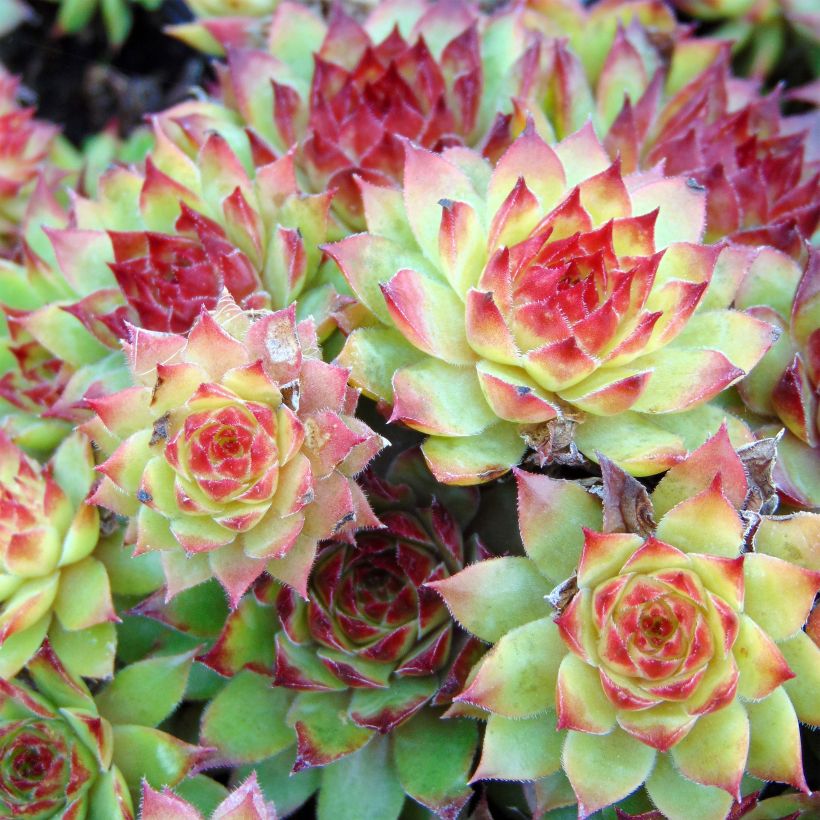

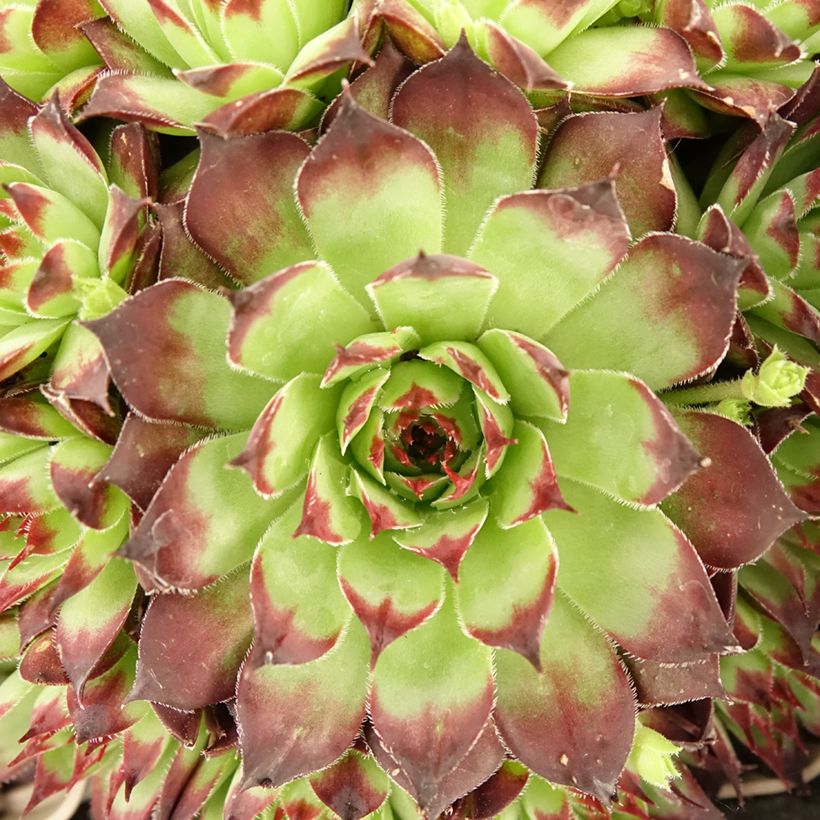

Flowering
Foliage
Plant habit
Botanical data
Sempervivum
x tectorum
Noir
Crassulaceae
Houseleek, Hen and Chicks
Cultivar or hybrid
Other Sempervivum - Houseleek
View all →Planting and care
Sempervivum ‘Black’ likes sunny or semi-shaded exposures, and perfectly drained, moist to dry and poor, sandy or gravelly soils. You can plant it in spring or autumn in the ground or in a container, adding gravel or coarse sand to the planting medium. On the other hand, if you place it in a rock garden or on a low wall, give it just a little potting soil to help it to take root. Afterwards, it will fend for itself.
If you wish to propagate it, simply cut a few young rosettes and replant them elsewhere, lightly burying the roots.
Take care of it by ensuring that it is not overwhelmed by taller plants, that it does not become covered in dead leaves or vegetation residues, and by optionally removing small faded inflorescences.
Planting period
Intended location
Care
Planting & care advice
-
, onOrder confirmed
Reply from on Promesse de fleurs
Similar products
Haven't found what you were looking for?
Hardiness is the lowest winter temperature a plant can endure without suffering serious damage or even dying. However, hardiness is affected by location (a sheltered area, such as a patio), protection (winter cover) and soil type (hardiness is improved by well-drained soil).

Photo Sharing Terms & Conditions
In order to encourage gardeners to interact and share their experiences, Promesse de fleurs offers various media enabling content to be uploaded onto its Site - in particular via the ‘Photo sharing’ module.
The User agrees to refrain from:
- Posting any content that is illegal, prejudicial, insulting, racist, inciteful to hatred, revisionist, contrary to public decency, that infringes on privacy or on the privacy rights of third parties, in particular the publicity rights of persons and goods, intellectual property rights, or the right to privacy.
- Submitting content on behalf of a third party;
- Impersonate the identity of a third party and/or publish any personal information about a third party;
In general, the User undertakes to refrain from any unethical behaviour.
All Content (in particular text, comments, files, images, photos, videos, creative works, etc.), which may be subject to property or intellectual property rights, image or other private rights, shall remain the property of the User, subject to the limited rights granted by the terms of the licence granted by Promesse de fleurs as stated below. Users are at liberty to publish or not to publish such Content on the Site, notably via the ‘Photo Sharing’ facility, and accept that this Content shall be made public and freely accessible, notably on the Internet.
Users further acknowledge, undertake to have ,and guarantee that they hold all necessary rights and permissions to publish such material on the Site, in particular with regard to the legislation in force pertaining to any privacy, property, intellectual property, image, or contractual rights, or rights of any other nature. By publishing such Content on the Site, Users acknowledge accepting full liability as publishers of the Content within the meaning of the law, and grant Promesse de fleurs, free of charge, an inclusive, worldwide licence for the said Content for the entire duration of its publication, including all reproduction, representation, up/downloading, displaying, performing, transmission, and storage rights.
Users also grant permission for their name to be linked to the Content and accept that this link may not always be made available.
By engaging in posting material, Users consent to their Content becoming automatically accessible on the Internet, in particular on other sites and/or blogs and/or web pages of the Promesse de fleurs site, including in particular social pages and the Promesse de fleurs catalogue.
Users may secure the removal of entrusted content free of charge by issuing a simple request via our contact form.
The flowering period indicated on our website applies to countries and regions located in USDA zone 8 (France, the United Kingdom, Ireland, the Netherlands, etc.)
It will vary according to where you live:
- In zones 9 to 10 (Italy, Spain, Greece, etc.), flowering will occur about 2 to 4 weeks earlier.
- In zones 6 to 7 (Germany, Poland, Slovenia, and lower mountainous regions), flowering will be delayed by 2 to 3 weeks.
- In zone 5 (Central Europe, Scandinavia), blooming will be delayed by 3 to 5 weeks.
In temperate climates, pruning of spring-flowering shrubs (forsythia, spireas, etc.) should be done just after flowering.
Pruning of summer-flowering shrubs (Indian Lilac, Perovskia, etc.) can be done in winter or spring.
In cold regions as well as with frost-sensitive plants, avoid pruning too early when severe frosts may still occur.
The planting period indicated on our website applies to countries and regions located in USDA zone 8 (France, United Kingdom, Ireland, Netherlands).
It will vary according to where you live:
- In Mediterranean zones (Marseille, Madrid, Milan, etc.), autumn and winter are the best planting periods.
- In continental zones (Strasbourg, Munich, Vienna, etc.), delay planting by 2 to 3 weeks in spring and bring it forward by 2 to 4 weeks in autumn.
- In mountainous regions (the Alps, Pyrenees, Carpathians, etc.), it is best to plant in late spring (May-June) or late summer (August-September).
The harvesting period indicated on our website applies to countries and regions in USDA zone 8 (France, England, Ireland, the Netherlands).
In colder areas (Scandinavia, Poland, Austria...) fruit and vegetable harvests are likely to be delayed by 3-4 weeks.
In warmer areas (Italy, Spain, Greece, etc.), harvesting will probably take place earlier, depending on weather conditions.
The sowing periods indicated on our website apply to countries and regions within USDA Zone 8 (France, UK, Ireland, Netherlands).
In colder areas (Scandinavia, Poland, Austria...), delay any outdoor sowing by 3-4 weeks, or sow under glass.
In warmer climes (Italy, Spain, Greece, etc.), bring outdoor sowing forward by a few weeks.






























